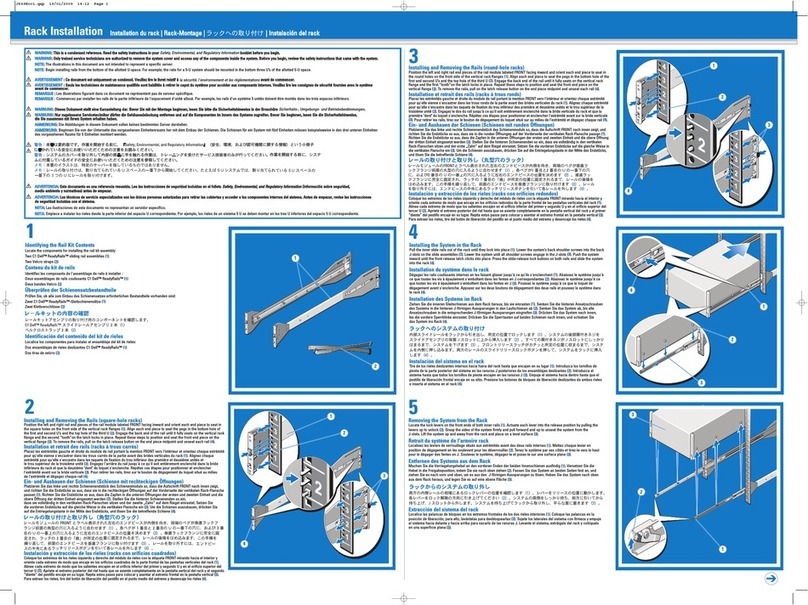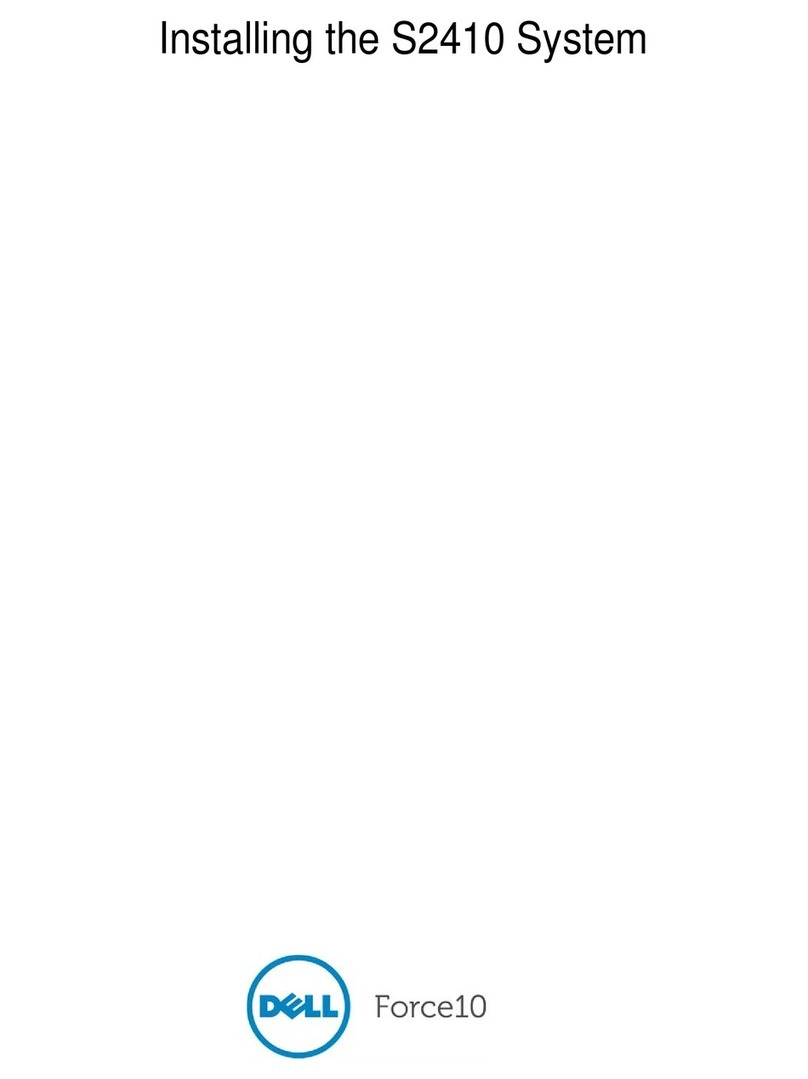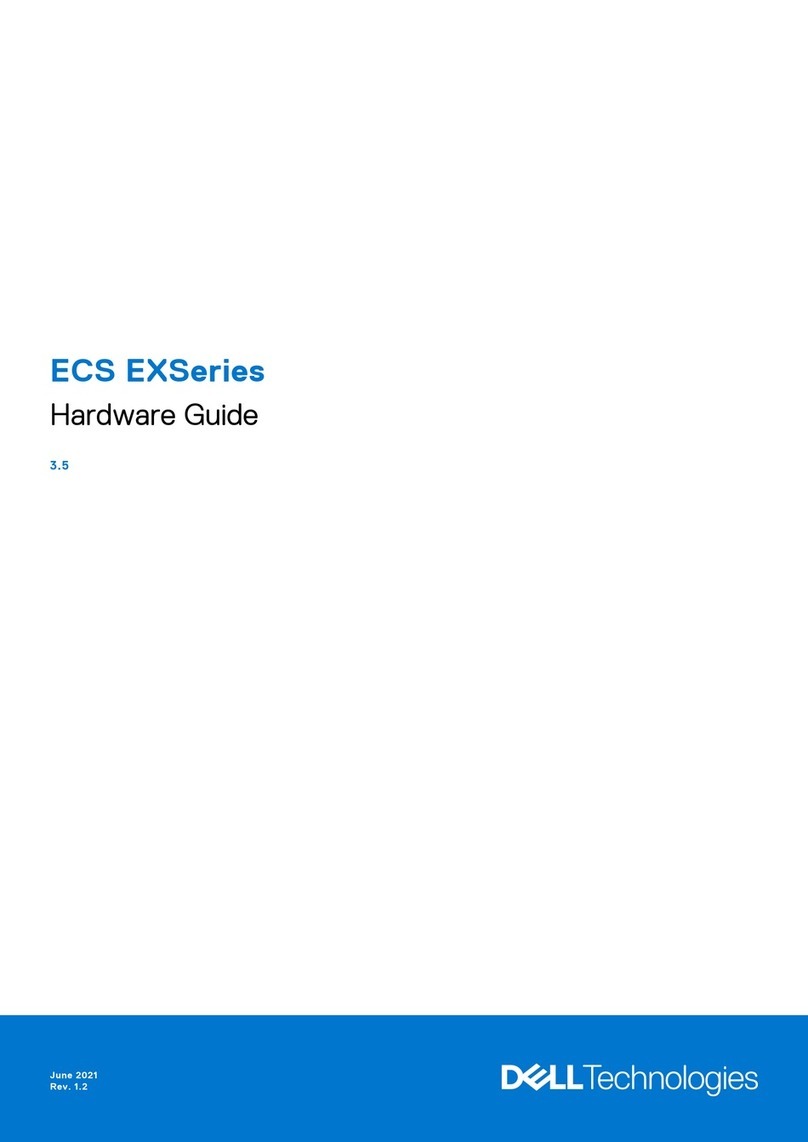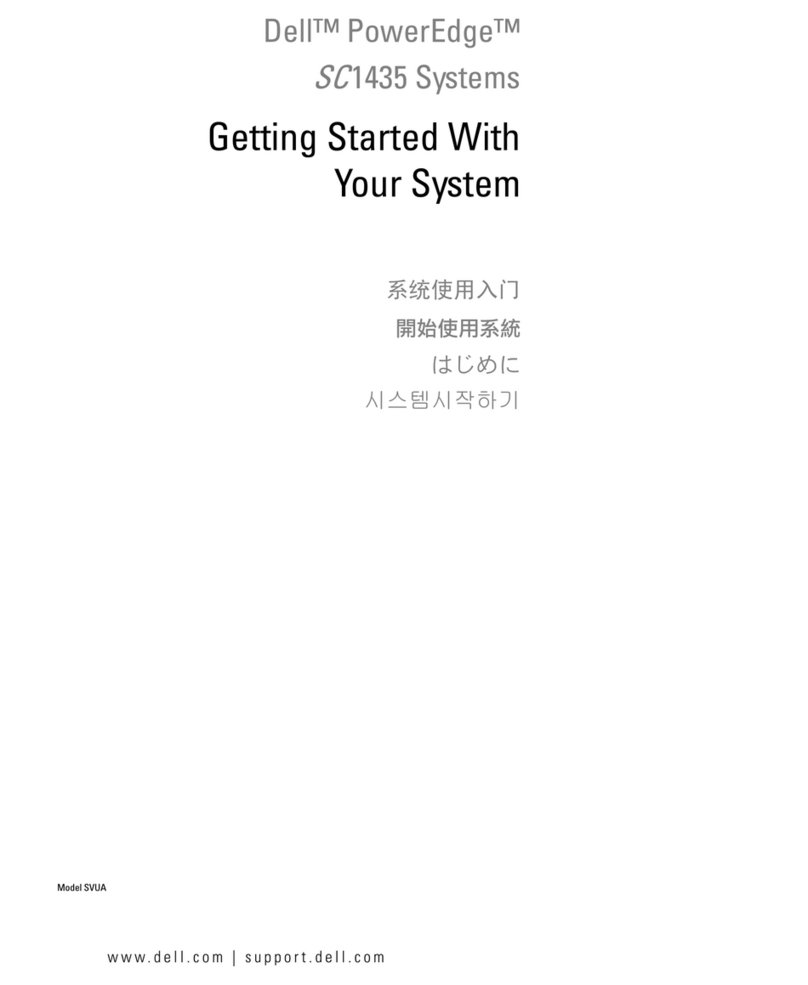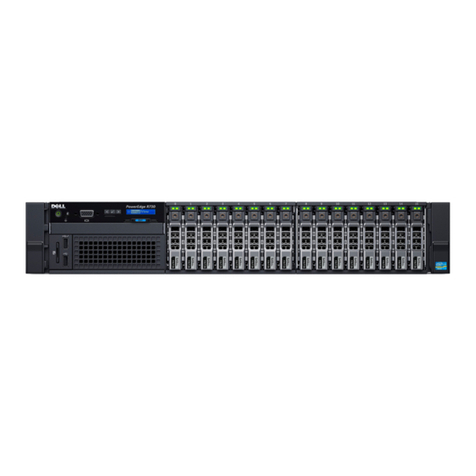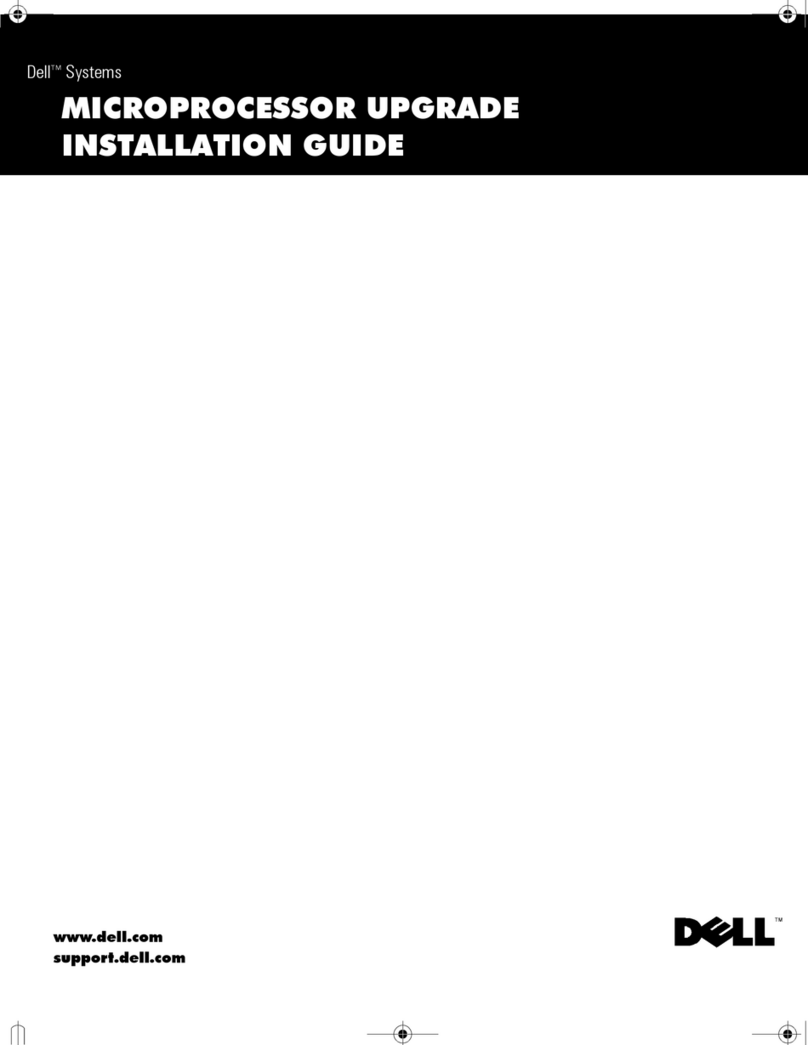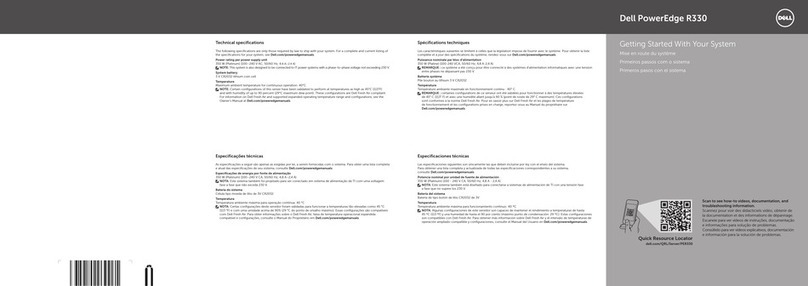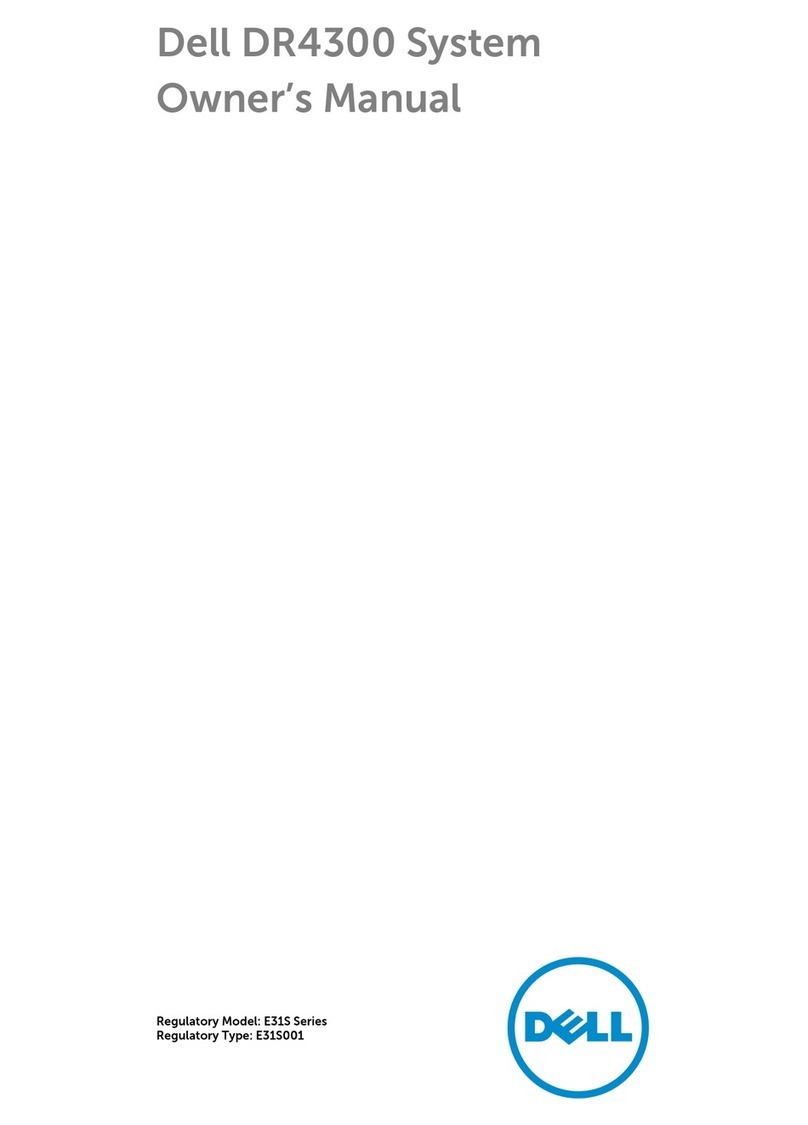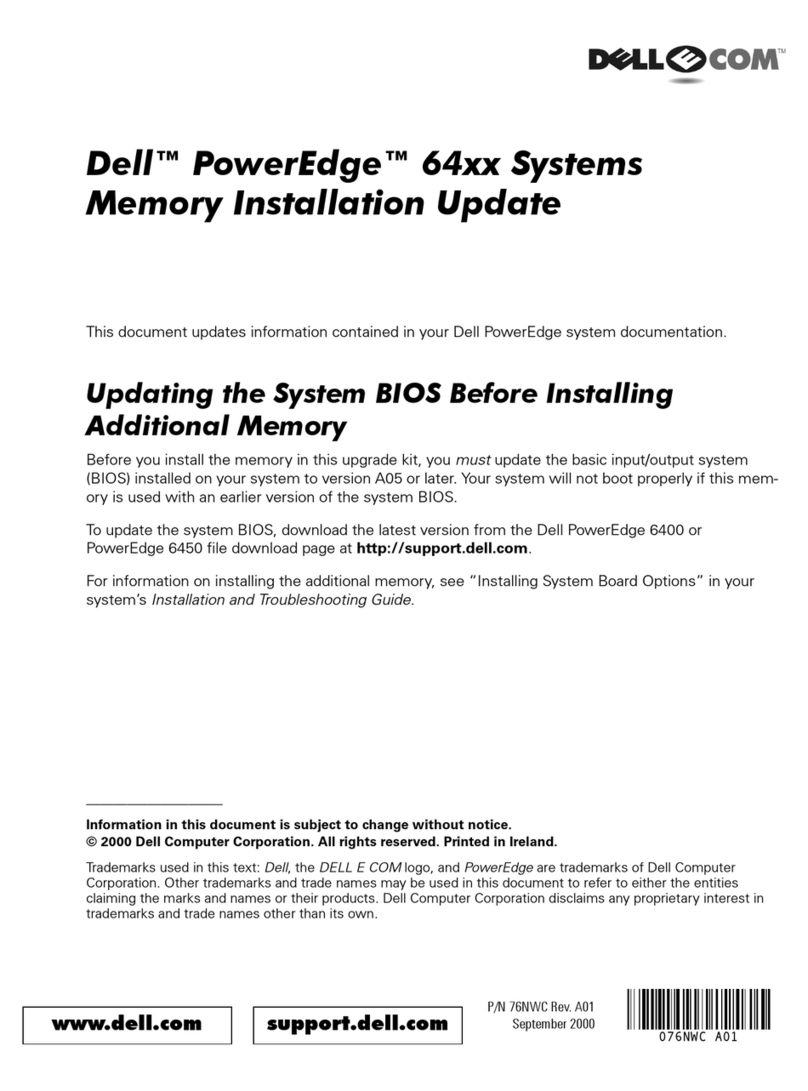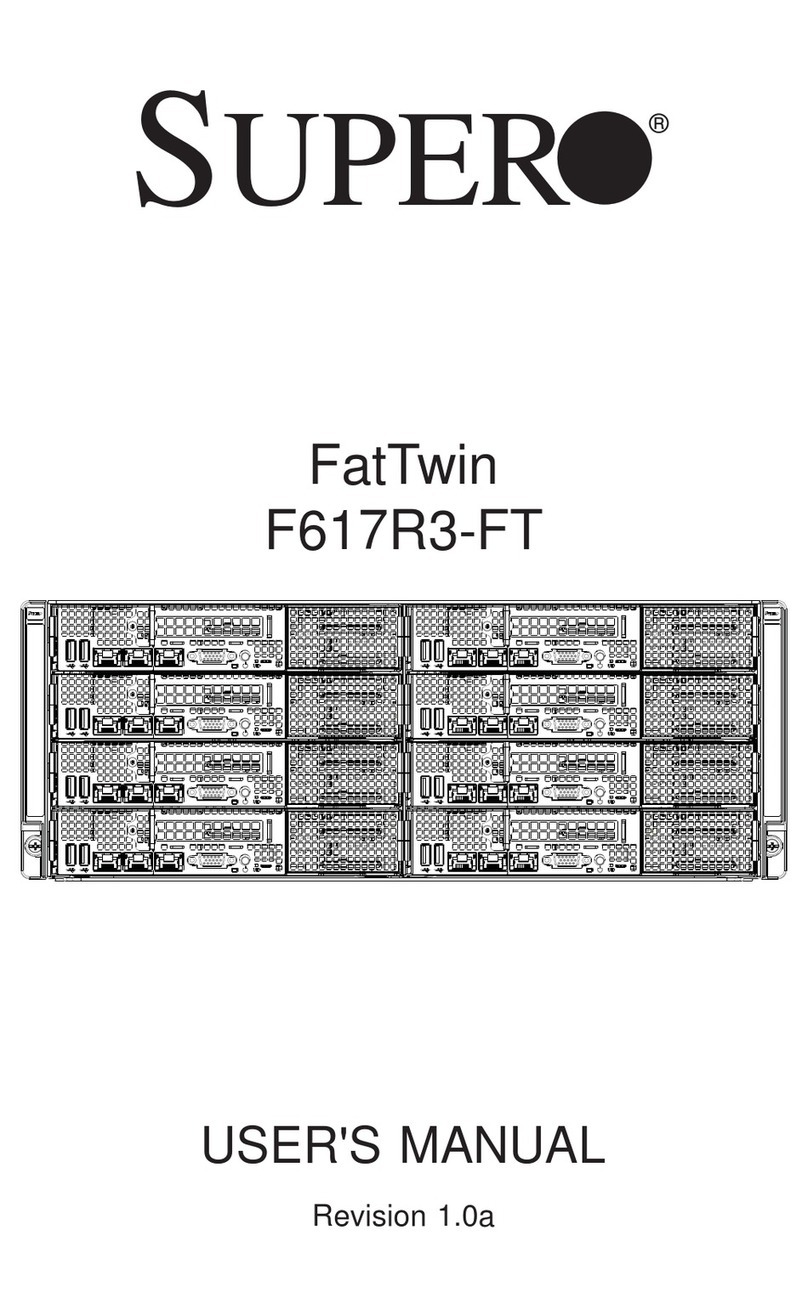
Table 4. Memory Settings details (continued)
Option Description
Correctable Error Logging Enables or disables correctable error logging. This option is set to
Enabled by default.
Dark Memory: Total Memory Available Enables or Disables dark memory feature. Dark Memory feature allows
software to change memory size. The option is set to Disabled and Hide
by default, options displaying needs to be enabled by personality module.
Processor Settings
To view the Processor Settings screen, power on the system, press F2, and click System Setup Main Menu > System
BIOS > Processor Settings.
Table 5. Processor Settings details
Option Description
Logical Processor Each processor core supports up to two logical processors.
If this option is set to Enabled, the BIOS displays all the
logical processors. If this option is set to Disabled, the BIOS
displays only one logical processor per core. This option is set
to Enabled by default.
CPU Interconnect Speed Enables you to govern the frequency of the communication
links among the processors in the system.
NOTE: The standard and basic bin processors support
lower link frequencies.
The options available are Maximum data rate, 11.2 GT/s,
10.4 GT/s, and 9.6 GT/s. This option is set to
Maximum data rate by default.
Maximum data rate indicates that the BIOS runs the
communication links at the maximum frequency
supported by the processors. You can also select specific
frequencies that the processors support, which can vary.
For best performance, you should select Maximum data
rate. Any reduction in the communication link frequency
affects the performance of non-local memory access
and cache coherency traffic. In addition, it can slow access to
non-local I/O devices from a particular processor.
However, if power saving considerations outweigh
performance, reduce the frequency of the processor
communication links. Before reducing the frequency, you must
localize the memory and I/O access to the nearest
NUMA node to minimize the impact to system performance.
Virtualization Technology When set to Enabled, the BIOS will enable processor
Virtualization features and provide the
virtualization support to the Operating System (OS) through
the DMAR table. In general, only virtualized environments
such
as VMware®, ESX™, Microsoft Hyper-V®, Red Hat® KVM,
and other virtualized operating systems will take advantage of
these features. Disabling this feature is not known to
significantly alter the performance or power characteristics of
the
system, so leaving this option Enabled is advised for most
cases.
Pre-operating system management applications 7

